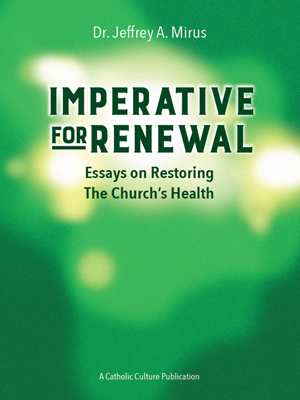The Significance of Joseph Husslein, S.J.
Joseph Husslein lived at his desk. He spent most of his waking hours with his pencils, carbon paper, and typewriter. Yet this quiet man, with no close friends, was driven by a vision that only the teachings of Christ could bring justice to humanity. From behind his desk, as he labored to explain, promote, and develop Christian teaching, Joseph Husslein tried to change the world.
Husslein saw the teachings of Christ as the only solution to the world's problems. As a Jesuit priest in the 1900s, he believed the Roman Catholic Church to be the true interpreter of the Christian message. Gifted with a German penchant for work, Husslein struggled by writing, editing, and organizing to spread the message of Roman Catholicism as the only antidote to the world's injustice.
Husslein lived at the convergence of several important developments for Roman Catholics. First, Pope Leo XIII made social justice a Catholic issue. In his 1891 encyclical letter, Rerum novarum, Leo XIII provided the catalyst, foundation, and approval for the development of modern Catholic social teaching. Prior to Rerum novarum social justice had been a peripheral issue for the Catholic Church.
Second, in the United States the Catholic population grew tremendously due to immigration. Many immigrants suffered under the social and economic injustices of the time. The American Church took up social issues in a sincere desire to help these Catholic immigrants and to keep them from leaving the Church to join socialist and radical groups. Third, in the early 1900s the Church emerged from its status as a beleaguered “un-American” minority. In particular, support for the First World War proved the patriotism of American Catholics. As anti-Catholic nativism waned Catholic thinkers felt freer to criticize American institutions. Husslein began his work just at the moment when American Catholic social thinking became possible.
Husslein was not alone in this effort. His contemporaries included John A. Ryan, Peter Dietz, Frederick Kenkel and his fellow Jesuits on the staff at America. The fame of John Ryan eclipsed the others, including Joseph Husslein. Yet Husslein's social teaching was unique.
Alone among Catholic social thinkers he used the bible extensively. Far more than his contemporaries he tried to deal with not only the spirit of Rerum novarum, and the later encyclical Quadragesimo anno (1931) of Pope Pius XI, but also with how to apply the content of these documents to social problems.
Like Catholic social thinkers writers of his time, he attacked socialism. However, Husslein also vigorously attacked the abuses of capitalism.The Christian Social Manifesto, (1931) gives Husslein's fully developed social critique of the injustice and “irreligion” he saw in America.
Contemporaries of Husslein described him as a pioneer in American Catholic social thought. In particular, among American Catholic writers Husslein pioneered the use of scripture in attacking social injustice. Husslein attempted to develop a social ethics based on biblical, largely Old Testament, principles. Husslein also used historical arguments to show the Catholic Church as the defender of the worker and to develop a medieval guild model for modern worker cooperatives. Two of his books, Bible and Labor (1924) and The Christian Social Manifesto (1931) still provide insightful reading. Lastly, Husslein, with his imaginative and colorful literary style, popularized Catholic social teaching.
Husslein also stands apart by the sheer volume of the social writing. With twelve books and over 500 hundred articles he produced the largest body of American Catholic social writings in his time. Yet Husslein's efforts to promote Catholicism as the leaven for the world went beyond his social writing. He undertook three other projects.
First, Husslein organized “A University in Print.” He edited over two hundred books on Catholic thought and culture. This project contributed significantly to American Catholic literature in the 1930s and 1940s. Husslein moved into the vanguard of the American Catholic literary revival of this period. A particular important work in the project was Husslein's editing of Social Wellsprings (1940-1942) providing readable English translations of the social encyclicals of Leo XIII and Pius XI.
Second, as part of the widespread movement among American Catholic universities in the early 1900s, Husslein established the School of Social Service at Saint Louis University in 1930 to promote Catholic social teaching and to train professional social workers.
Third, Husslein wrote another nine books and dozens of articles on religious devotion. These works are excellent examples of the better Catholic spiritual literature of the period.
See also The Christian Social Manifesto
This item 9466 digitally provided courtesy of CatholicCulture.org






